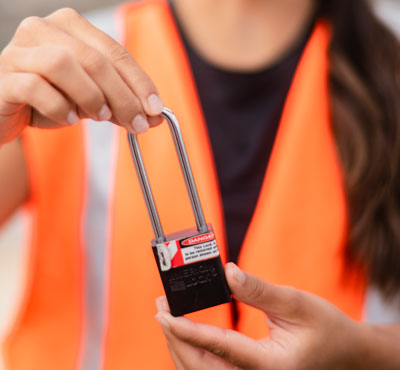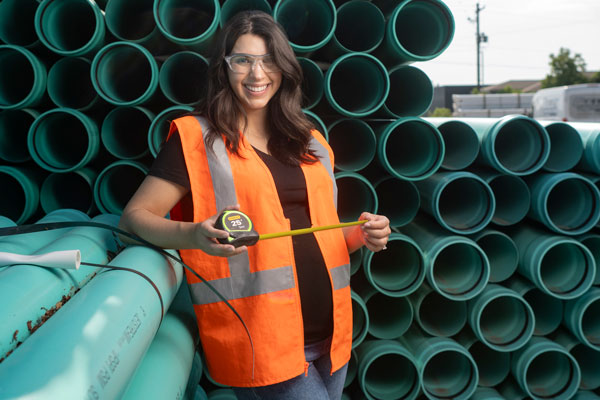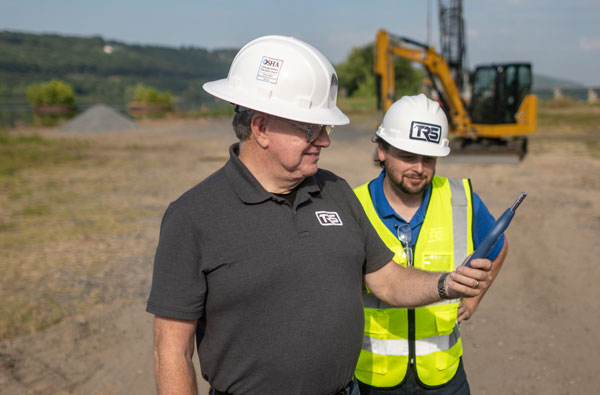
We support organizations in building safer, more compliant workplaces by identifying safety-sensitive roles, analyzing job demands, and uncovering high-risk tasks. Through validated assessments and real-time observations, our team delivers the data-driven insight needed to manage risk, improve safety culture, and meet regulatory requirements with confidence.
Determining Safety-Sensitive Roles
Accurately identifying safety-sensitive roles is essential to maintaining both compliance and workplace safety—particularly in environments where physical performance directly affects the safety of employees, co-workers, or the public.
Our team performs detailed, validated Physical Demands Analyses (PDA) to objectively assess the physical, cognitive, and environmental demands needed to perform the essential job functions and requirements of each role. This data-driven process ensures that safety-sensitive designations are based on clear, task-specific criteria—providing employers with legally-defensible, evidence-based classifications aligned with regulatory expectations.
Why It Matters
Designating a position as safety-sensitive has direct implications for:
- Hiring practices and conditional job offers
- Compliance with drug and alcohol testing policies (DOT and non-DOT)
- Return-to-work decisions
- Accommodations and restriction management
- Workers’ compensation and liability exposure
Incorrect or subjective classification can expose an organization to regulatory challenges, legal risks, and unsafe working conditions.
The Importance of a Non-Biased Third Party
To ensure these determinations are objective, defensible, and consistent, we serve as a neutral third party — relying on standardized methodologies, job observations, and measurable data to:
- Eliminate bias from internal stakeholders
- Prevent over- or under-classification of job roles
- Support compliance with OSHA, ADA, and DOT regulations
- Create a documentation trail for legal and insurance purposes
We don’t guess or assume — we provide tangible, role-specific data that empowers your organization to make informed decisions with confidence.
From Analysis to Application
Once the safety-sensitive designations are determined, we work with your team to integrate findings into:
- Post-offer employment testing protocols
- Fit-for-duty and return-to-work evaluations
- Policy development and employee communication
- Accommodation planning and job matching
Worksite Risk Assessments
Our Worksite Risk Assessments are key to keeping your safety strategies relevant and effective. Through real-time observation and audits, we:
- Identify discrepancies between documented and actual work practices
- Detect unsafe work behaviors and ergonomic risks early
- Verify that safety protocols and training are being utilized appropriately
- Highlight opportunities for coaching, refresher training, or redesign
- Identify process changes and the need to revalidate your Physical Demands Analyses
These assessments create a feedback loop that supports continuous improvement and empowers frontline employees to take ownership of safety.
Identifying and Reducing High-Risk Tasks
Our Physical Demands Analysis (PDA) process helps employers identify tasks that are at high risk of causing a musculoskeletal injury within job roles — tasks most likely to cause injury due to physical strain, repetitive motion, awkward postures, or environmental hazards.
What We Do:
- Observe and assess job tasks in real-world settings
- Identify high-risk movements and tasks using objective, measurable data
- Document those risks in clear, role-specific reports
- Recommend practical solutions to reduce exposure and injury
How It Helps:
- Creates a formal record of high-risk tasks for assessment, mitigation, and training efforts
- Supports effective new hire training and return-to-work programming
- Enables targeted training for employees to improve body mechanics and safety awareness while preventing injury
- Guides ergonomic improvements and administrative controls
With the right data and training, high-risk doesn’t have to mean high injury rates. We give you the tools to prevent injuries before they happen.
Safety Observations & Quarterly Task Audits
Proactive Insight. Continuous Improvement. Safer Outcomes.
Our Safety Observations and Quarterly Task Audits are structured, hands-on assessments designed to capture real-time data on how tasks are performed in the field—beyond what's written in job descriptions. These audits provide ongoing visibility into work practices, equipment use, and task execution, helping organizations pinpoint gaps between expected and actual performance.
Why It Matters
By regularly observing employees in their daily tasks, our safety professionals can:
- Identify behavioral risks and unsafe patterns
- Evaluate adherence to training and ergonomic guidance
- Validate or refine findings from your Physical Demands Analysis (PDA)
- Monitor the effectiveness of control measures and safe work practices
- Flag opportunities for refresher training or coaching
- Support early intervention by recognizing MSD risk indicators
How It All Connects
These audits don’t stand alone—they enhance the value of your broader safety initiatives:
- Physical Demands Analysis: May identify process changes, new equipment introduced, and changes in task scope that could effect job demand and defensibility of job accomodations.
- Ergonomics: Observational insights help identify tasks in need of skilled evaluations to ensure workstation activities and body mechanics are being utilized safely and effectively.
- Training Programs: Results guide targeted education, site specific education, or retraining to enforce key safety messages, correct unsafe habits, and guide compliance.
The Outcome
When conducted consistently, Safety Observations and Task Audits create a feedback loop that keeps your safety program current, relevant, and responsive. They empower your leadership teams with actionable insights and reinforce a culture of accountability and continuous improvement.
VPP Audit Support for OSHA Voluntary Protection Programs
The OSHA Voluntary Protection Program (VPP) recognizes worksites with outstanding health and safety practices. Preparing for VPP participation requires a comprehensive audit to ensure your systems meet or exceed OSHA’s rigorous standards.

What a VPP Audit Includes
Our VPP audit process evaluates key elements of your safety and health program, including:
- Management, leadership, and employee involvement
- Worksite analysis
- Hazard prevention and control
- Safety and health training programs and documentation
- Injury and illness rates and reporting
Why Choose Us as Your VPP Audit Partner?
As OSHA VPP Affiliates, we bring deep expertise and a proven track record supporting organizations through the VPP process. Our experienced safety professionals offer a fresh, unbiased perspective to help you:
- Identify and address gaps before OSHA’s formal audit
- Clarify documentation and program expectations
- Conduct mock walkthroughs and interviews
- Align your practices precisely with VPP requirements
- Boost confidence and readiness for the official evaluation
With our expert guidance, you’re partnering with the right team to achieve and maintain VPP Star status — ensuring a safer workplace and stronger safety culture.
Ready to prepare your site for VPP success? Contact us today for expert audit support.
Sound Mapping & Dosimetry Services
Understand Noise Exposure. Protect Your Workforce.
In manufacturing, high noise levels pose serious risks to employee health and compliance. Our Sound Mapping and Dosimetry Services provide the data you need to take targeted, effective action.
Sound Mapping
We use specialized equipment to create a visual noise contour map of your facility, identifying high-noise zones and sources of exposure. This helps guide decisions on:
- Hearing protection zones
- Engineering controls
- Barrier placement and signage

Dosimeter Monitoring
Wearable noise dosimeters track real-time exposure throughout a shift. This gives you:
- Job-specific exposure data
- Support for Hearing Conservation Program requirements
- Clear insight into which tasks or roles exceed safe limits
Why It Matters
- Meet OSHA noise exposure limits
- Prevent long-term hearing damage
- Reduce claims and liability
- Support compliant, defensible safety programs
- Protect your employees from health hazards
Deliverables
- Noise maps of your facility
- Individual and task-based exposure reports
- Practical recommendations for reducing noise-related risk
Let’s assess your facility’s sound environment — and create a safer, quieter workplace.

